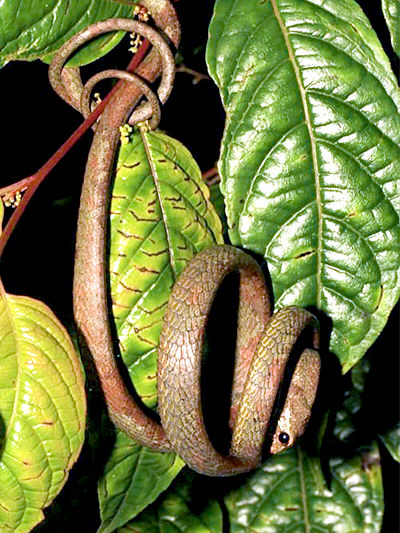 |
Family : PAREIDAE
Species : Aplopeltura boa
Maximum Size : 85 cm
The Blunt-headed Slug
Snake inhabits lowland and lower montane forests, up to elevations of around
1500 metres. It is nocturnal and arboreal in habits, and is typically found
perched on low vegetation.
It is known to feed on slugs and snails, and possibly small vertebrates
(e.g. small lizards).
As an unusual defensive posture this snake coils itself up like a spring.
This may possibly be unique to the species.
Its body is slender and laterally compressed, and its head is short and
blunt. Its body is greenish brown to reddish brown, with the latter colour
comprising vaguely-defined saddles. Some examples may bear cream spots on
the flanks. Its tail is around one-third of the length of its body.
There are pale markings on the head, and the eyes are large.
The Blunt-headed Slug snake is recorded from Myanmar, southern Thailand,
Peninsular Malaysia, Sumatra (including Nias and Bangka), Borneo (including
the Natuna Islands) and Java. It also occurs in many islands of the
Philippines, including the larger islands of Luzon, Mindanao and Palawan.
Figs 1 and 2 : Example from Maxwell Hill, Peninsular Malaysia (elevation of
around 1100 metres). Photos thanks to Noel
Thomas.
References :
Das, I., 2004. Lizards of Borneo - A Pocket Guide. Natural History
Publications (Borneo) Sdn. Bhd.
|